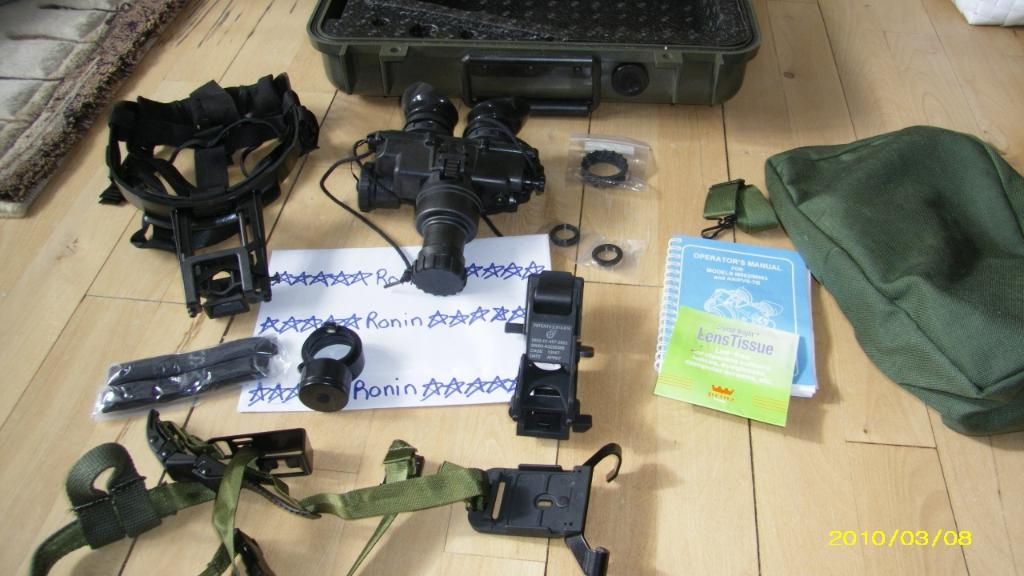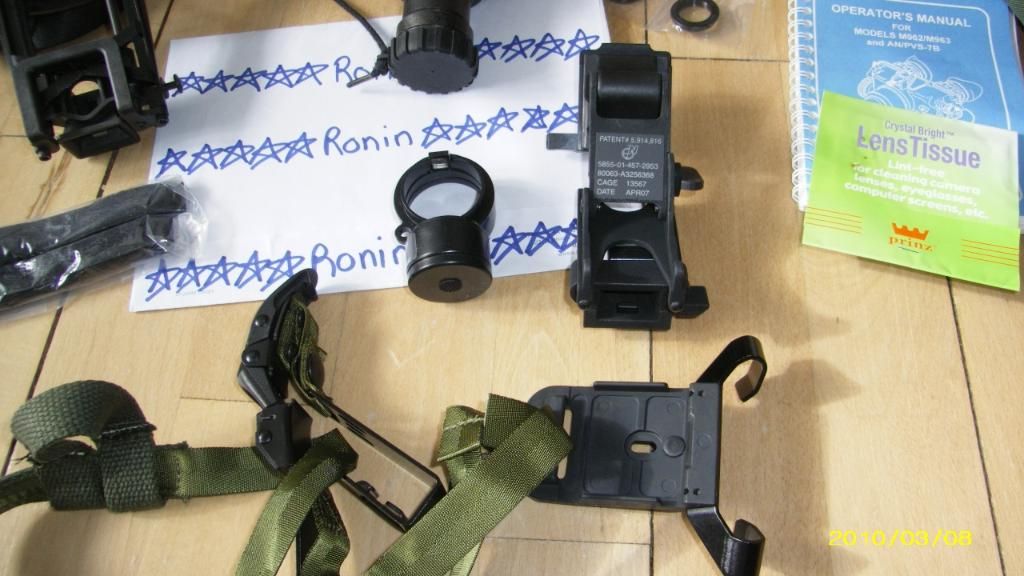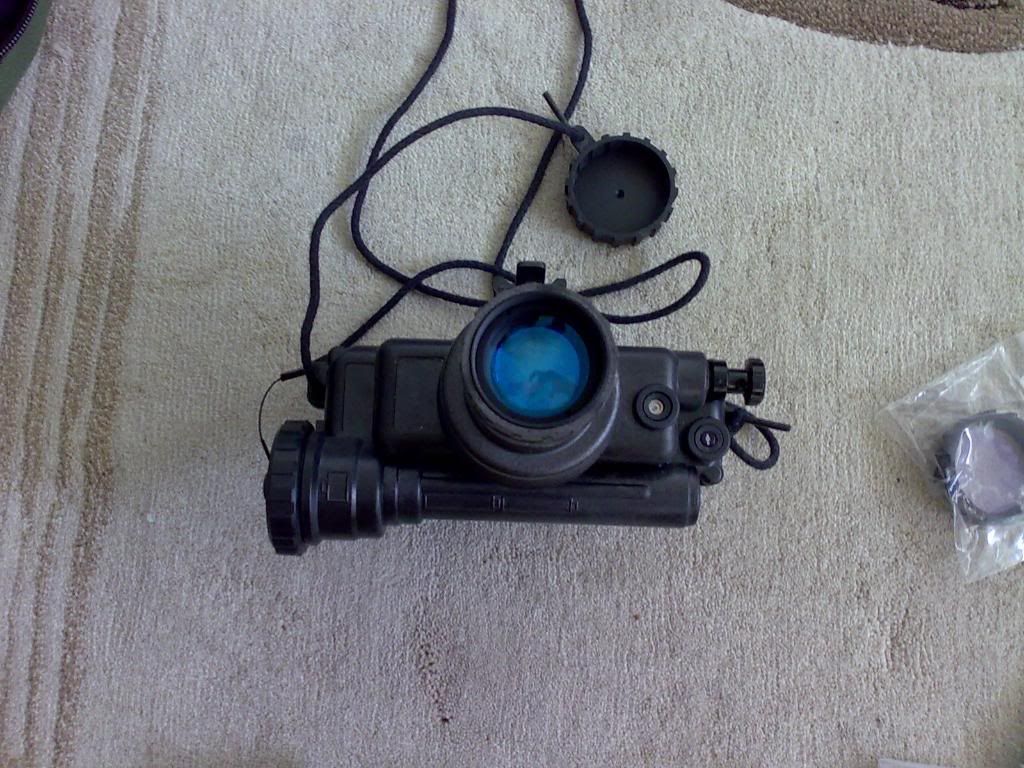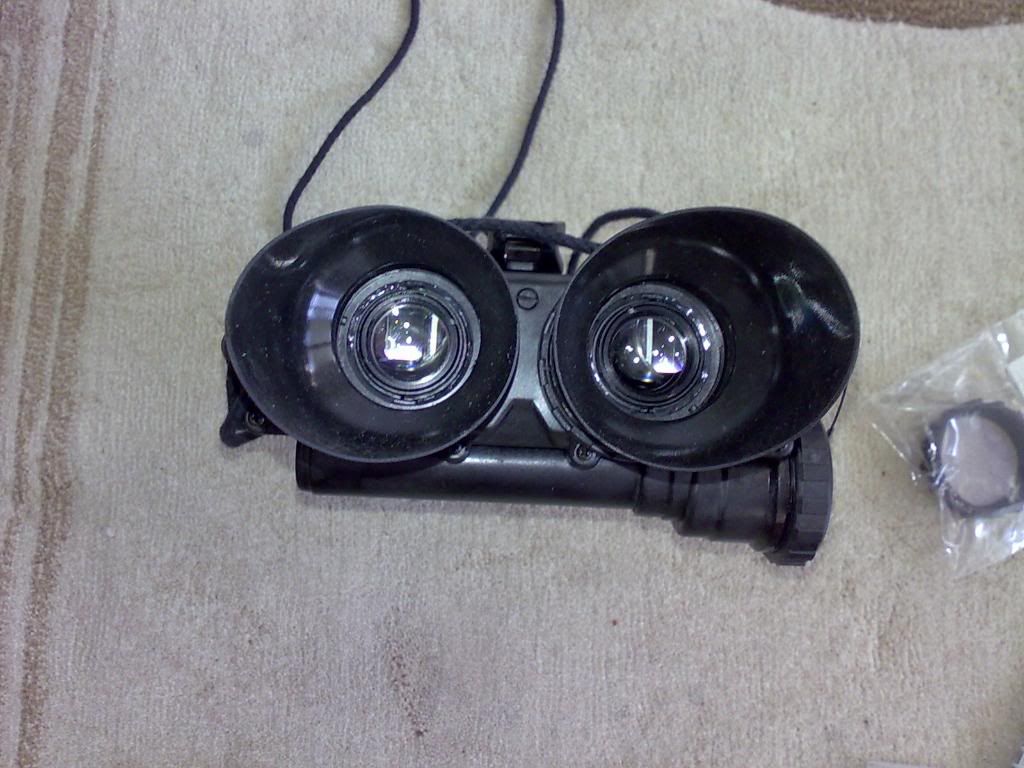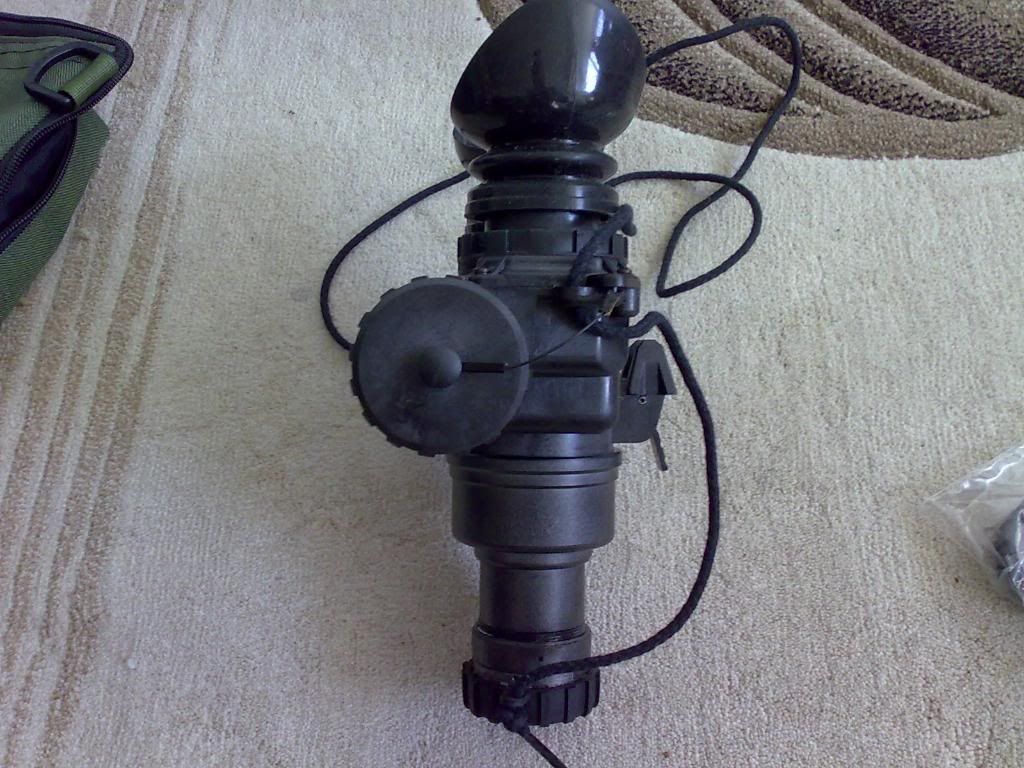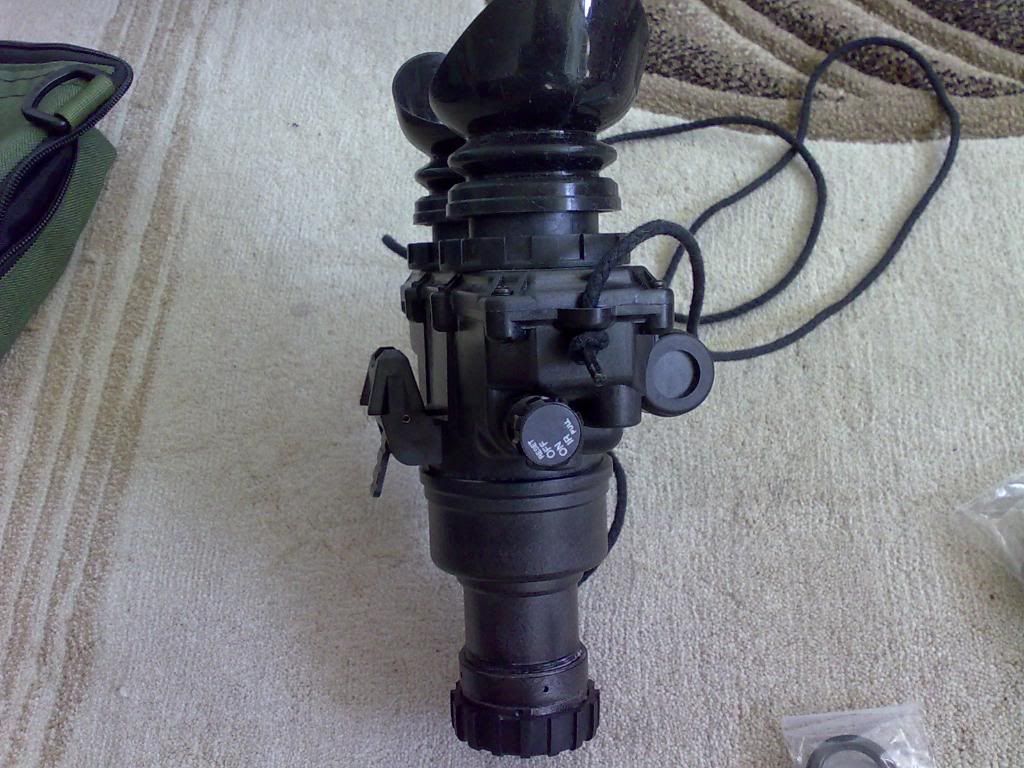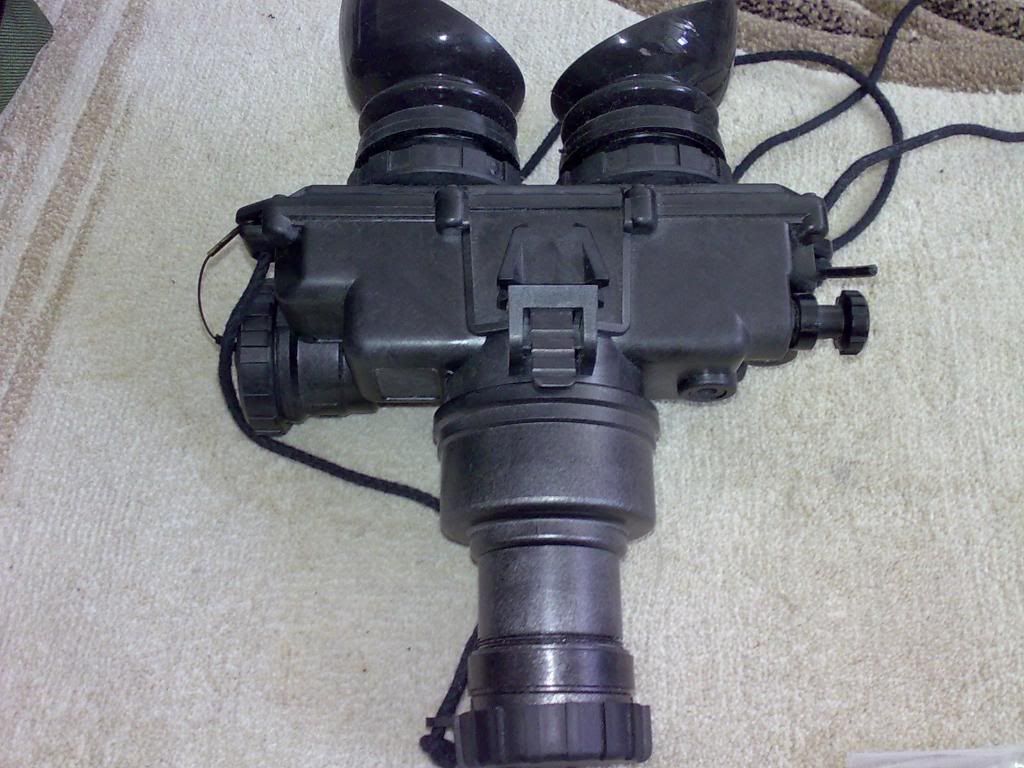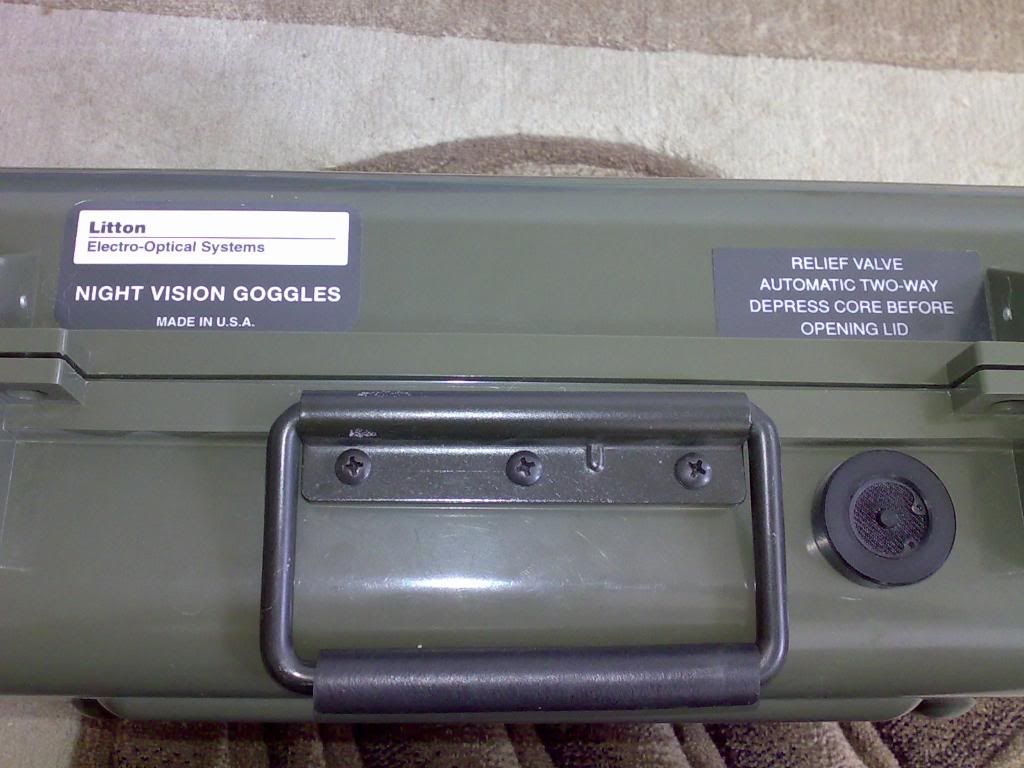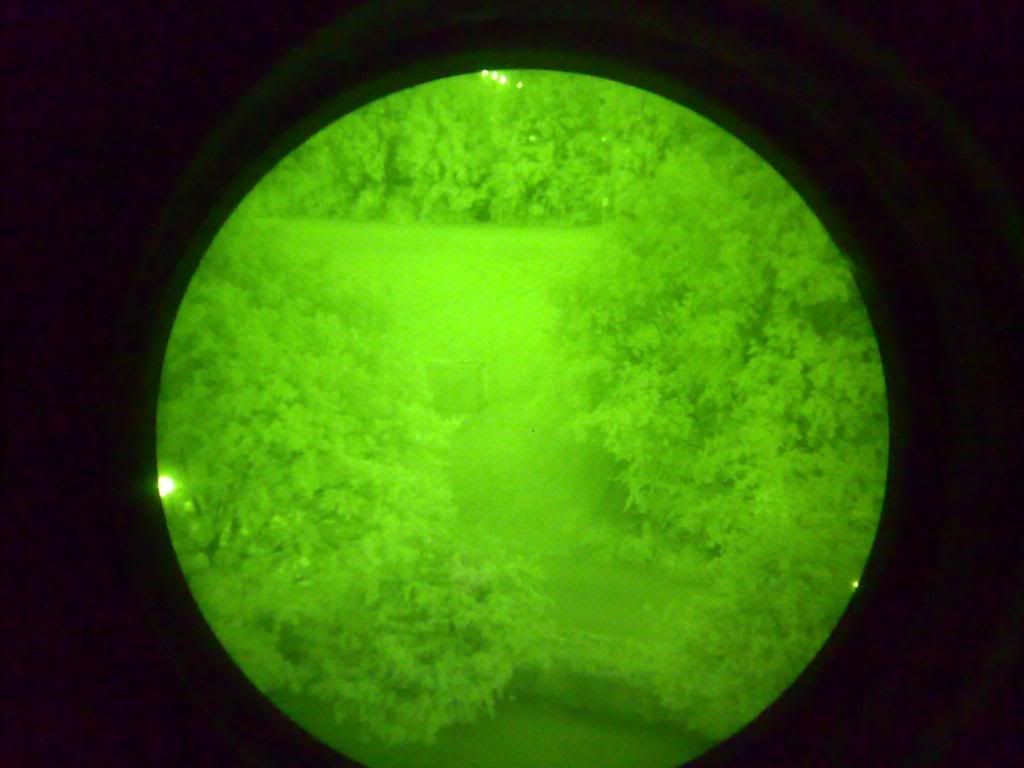Litton PVS-7B Night vision Gen3 tube
A real classic and still one of the most used NVG in the world. Also in the movies.
Description:
PVS-7 Night Vision Goggles allow the user to see at night using moonlight or starlight. PVS-7s can be hand held, head-mounted, or helmet-mounted. The goggles have an IR illuminator for illumination or signaling. An indicator lets the user know when the IR light is on. A separate indicator signals low battery. Automatic shutoff occurs on high light, when goggle is detached from the head mount, or flipped up on the helmet mount.
Characteristics:
Weight: 18 oz
Focus Range: 20 cm to Infinity
Range: 150 m (Starlight), 300 m (Moonlight)
Battery: (2) AA or (1) BA-5567/U
Battery Life: 4-6 hours
Magnification: 1X
Field of View: 40�
Interpupilary Adjustment: 55 to 71 mm
Focus Range: 20 cm to Infinity
Range: 150 m (Starlight), 300 m (Moonlight)
Battery: (2) AA or (1) BA-5567/U
Battery Life: 4-6 hours
Magnification: 1X
Field of View: 40�
Interpupilary Adjustment: 55 to 71 mm
Limitations:
In complete darkness, such as inside buildings, PVS-7s are ineffective without IR illumination. The compass is 15� off. The IR illuminator illuminates only at a short range. The IR illuminator is visible to an enemy with NVGs. The helmet mount unbalances the helmet and causes neck fatigue. The 7B carrying case has a noisy velcro closure.
Battery Installation. Either (1) BA-5567/U or (2) AA alkaline.
Indicator Lights
LOW BATTERY – Red dot in right eyepiece.
IR beacon is ON – Red dot in left eyepiece.
Switch
OFF / RESET – turns goggles OFF. Resets Goggles after automatic shutoff.
ON – turns goggles ON.
IR – turns IR beacon ON. Pull and turn. New goggles have temporary ON.
Automatic Shutoff
Goggles shut off automatically in Excessive Light, when the goggles are removed from the Head Mount, or when the goggles are flipped up from the Helmet Mount. To turn goggles back on, turn switch to OFF / RESET, then back to ON position.
Goggle Adjustments. PVS-7s have four (4) adjustments:
Interpupilary Distance. The two eyepieces slide apart to adjust to the user�s interpupilary distance. Adjust the Interpupilary Distance so that each eye views each lens as a perfect circle.
Eye Relief. On the head mount and the helmet mount, the distance from the goggles to the user�s eyes needs to be adjusted as close to the eyes as is comfortable.
Objective Lens Focus. The main lens rotates to focus on objects closer or farther away.
Diopter focus. Each eyepiece adjusts independently to focus each eye on the image inside the goggles. Turn objective lens to focus on an object 20 feet away. Once focused, turn left diopter ring counterclockwise all the way. Close right eye. Turn left diopter ring clockwise until image first becomes clear. Do not turn past this point. Repeat this adjustment for right eyepiece, then re-adjust objective lens focus.
Mounts
Always wear the PVS-7 on a mount. NVGs are not opera glasses to be worn around the neck and lifted to the eyes when needed. This requires one hand, making it impossible to shoot. The helmet mount is far superior to the head mount. On operations where helmets are not usually worn, such as boat raids, leaders may direct Marines to wear helmets solely as a platform for the PVS-7. Marines should be able to assemble all mount hardware in the dark.
Head Mount. Don Head Mount and adjust straps. Attach goggles to mount. Adjust Eye Relief by sliding mounting bracket toward or away from eyes.
Helmet Mount. Strap Helmet Mount onto helmet. Attach goggles to Mount. Adjust goggle height by loosening bracket knob and sliding goggles up and down. Adjust Eye Relief by sliding mounting bracket toward or away from eyes. Goggles can be flipped up when not in use.
Navigate with PVS-7
Procedures
- Ded Reckoning. Hold compass steady against body. Adjust NVGs to read dial. Look up and adjust NVGs to distant steering mark. Walk.
- Terrain-Association. Adjust NVGs to infinity. While moving, observe terrain, and follow preplanned route. Realize that many terrain features appear different or not at all on NVGs.
Techniques
- Maintain focus on distant terrain. Do no attempt to continuously refocus NVGs on ground or vegetation. When stopping to read map,
- While moving, binoculars can also be used to improve distant night viewing.
- Realize that sense of hearing, smell, and touch is decreased due to concentration required for NVGs.
- The Lensatic Compass has luminous markings. Silva-type compasses are difficult to read with NVGs.
- Realize that depth perception is poor when using PVS-7. Experience with PVS-7 increases ability to perceive depth.
Common Errors
- Overconfidence. NVGs do not turn night into day. Good route planning is still a necessity.
- Tunnel vision. NVGs cut view from 188� to 40� . Scan continuously to make up for this limitation.
- Using the PVS-7 compass. This compass is off by approximately 15� due to metal in the mount. Use this compass for general orientation. Do not use this compass for taking azimuths while ded reckoning.
- Using the IR illuminator. In the 1982 Falklands War, British patrols could clearly observe Argentinean leaders moving at night with their NVG IR illuminators turned on.


